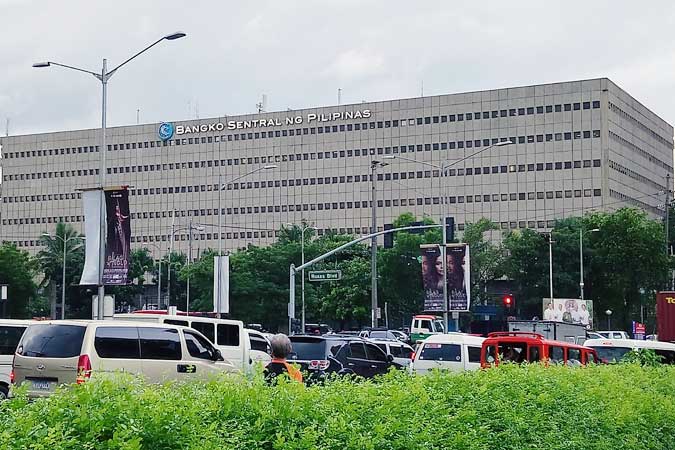THE BANGKO SENTRAL ng Pilipinas will likely keep interest rates and banks’ reserve requirement steady in the meantime. — BW FILE PHOTO
THE CENTRAL BANK will not raise rates or cut banks’ reserve requirement ratio (RRR) anytime soon as the economy’s recovery is still in its “early stages,” Bangko Sentral ng Pilipinas (BSP) Governor Benjamin E. Diokno said on Monday.
Mr. Diokno said ahead of the Monetary Board’s policy review on Thursday that it is not the right time to make any adjustments to benchmark interest rates or lenders’ reserve ratios as the economy still needs support from easy policy.
“We need to sustain it [economic recovery] and raising interest rates at this time is not the right thing to do, it is counterproductive,” he said in an ABS-CBN News Channel interview on Monday.
“We will continue our monetary policy accommodation as long as necessary to ensure that the economic recovery is sustainable and strong,” Mr. Diokno added.
Reducing banks’ RRR is “not in the agenda” at Thursday’s policy meeting, he added, following hints from the central bank last week that it remains open to cutting these ratios.
“While I’m committed to reduce the RRR to single digit before the end of my term, which is in 2023, cutting it now is untimely and not justified,” Mr. Diokno said.
“There’s still a lot of liquidity in the system. If there comes a time when the financial system needs more liquidity or some sort of strong loan demand, then that’s the time when we might consider…,” he added.
A BusinessWorld poll last week showed 18 analysts unanimously expect the BSP to keep benchmark interest rates unchanged at their record lows at Thursday’s meeting as the spread of the Delta variant of the coronavirus disease 2019 (COVID-19) threatens the economic outlook.
The BSP slashed benchmark rates by a cumulative 200 basis points (bps) last year. Borrowing costs have been at record lows since the Monetary Board’s last adjustment, which was a 25-bp cut in November.
Aside from keeping rates low, the central bank has also provided stimulus by freeing up liquidity via RRR cuts and other easing measures, which have released some P2 trillion into the financial system, equivalent to about 12% of the country’s gross domestic product (GDP).
Despite this, bank lending has been contracting since December, declining by 2% in June due to cautiousness among lenders amid the uncertain economic environment.
The reserve requirement for big banks is currently at 12%, still one of the highest in the region. The central bank last cut big banks’ RRR in April 2020 with a 200-bp reduction.
In July 2020, it likewise slashed the reserve requirements of thrift and rural banks by 100 bps to 3% and 2%, respectively.
ING Bank N.V. Manila Senior Economist Nicholas Antonio T. Mapa said due to the excess liquidity in the financial system, funds that will be released by another RRR cut are unlikely to find their way into the real economy.
“An additional P100 billion freed up by a potential RRR reduction would simply return to the BSP’s overnight facilities and not likely be utilized to fund fresh loans,” Mr. Mapa said.
He noted that bulk of the liquidity released via the central bank’s easing measures are “simply returned” to the BSP — parked in its term deposit facility and short-term securities — as banks are hesitant to lend due to the risky business environment.
“The BSP has done its part to signal to banks and realign the risk reward spectrum for banks to consider, but at the end of the day, it will be up to banks to deploy these funds in productive sectors of society,” Mr. Mapa added.
The economy shrank by 3.9% in the first quarter, a softer contraction versus the 4.2% previously reported, based on revised data released by the Philippine Statistics Authority (PSA) on Monday.
The PSA will report second-quarter GDP data on Tuesday. A separate BusinessWorld poll of 20 analysts yielded a median estimate of a 10.6% growth print for the April to June period, mainly due to base effects from the 17% contraction a year earlier. If realized, this would mark the country’s exit from recession following five straight quarters of economic contraction.
The government targets 6-7% GDP growth this year. — LWTN

